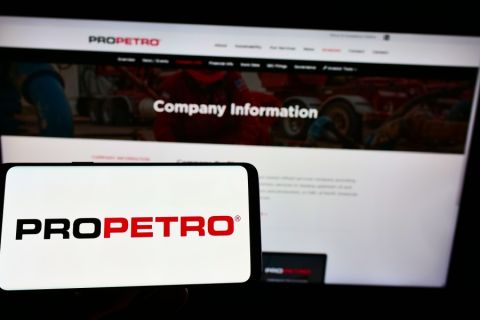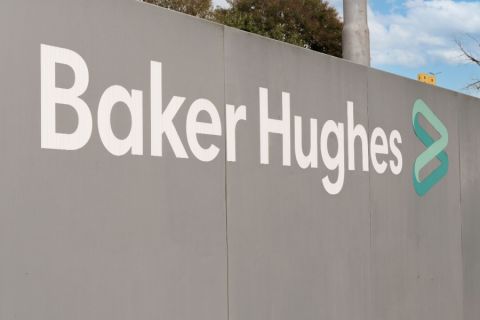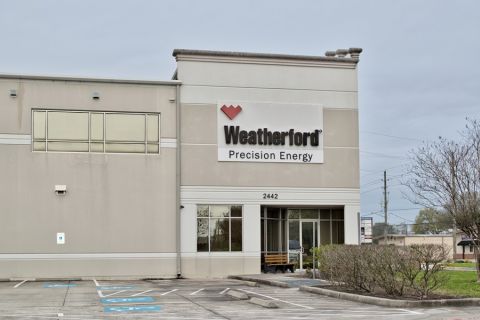Waterflood reservoirs that have high residual oil saturation are often targets for solvent, alkaline, surfactant and polymer chemical flooding during EOR processes designed to mobilize and recover that oil. The generally accepted sequence of events that takes place when considering the application of EOR chemicals begins with conducting laboratory (chemical formulation followed by coreflood testing) and computer simulation, followed by the chemical feed supply infrastructure design and installation and, finally, performing chemical injection into the reservoir.
Most conventional EOR chemicals are sensitive to the quality of the water that is being used for injection. E&P companies are usually forced to find a fresher, cleaner source of water to accommodate the chemicals, adding yet another step that often is impractical since sufficient volumes of alternate water might not be readily available. The preparation phase can take months to years to complete and cost hundreds of thousands to millions of dollars before the first drop of chemical is ever injected into the reservoir.
In spite of the fact that proper due diligence is necessary in the design and implementation of these EOR projects, the fact remains that case histories documenting the technical and economic success of conventional chemical EOR projects are rare. One must ask why these processes work in the laboratory but frequently fail to meet expectations when applied to the real world. The most likely reason for poor results is that conventional EOR chemicals fail to contact as much of the reservoir as expected because: 1) they tend to be consumed by rock surfaces (adsorption) close to the injectors, which limits the depth to which they can penetrate into the reservoir; 2) they are inaccessible to smaller pore spaces due to the relatively large emulsion droplet size (on average ±5 microns [μ] in diameter); and/or 3) they only flow through a small fraction of the rock that has the highest relative permeability to water, so they bypass the lower permeability rock where most of the remaining oil saturation is stranded. Conformance can be improved by injecting gel polymer solutions to divert subsequent drive fluids into lower permeability rock. However, problems associated with EOR chemical adsorption and droplet size can only be solved by changing the chemical additive.
To reduce the upfront cost and time required to move a project from concept to implementation, a change of the paradigm must occur whereby the reservoir becomes the core flood/laboratory so that real-world results can be obtained at a fraction of the cost as compared to the conventional approach. This concept is not intended to diminish the importance of or the need for appropriate laboratory testing to confirm which specific chemical formulation reacts best with the oil, but it does eliminate testing in cores. Besides, cores are usually not representative of the overall reservoir, so it is understandable why they can produce overly optimistic results as compared to the actual results observed after the project is implemented in the field.
The proposed strategy also eliminates the need for injecting such large volumes of water and EOR chemicals to validate the process and significantly reduces the need for exotic and expensive chemical feed equipment, and the chemical is designed to accommodate existing injection water rather than having to change the water to accommodate the chemical.
Nanofluid additives
Patented and patent-pending Complex nano-Fluid (CnF) chemical additives are nano-sized droplets that have a drop average of 30-μ. To put this into perspective, 1 billion of these nano-sized droplets represent the same volume as a traditional 30-μ droplet. The CnF droplets are so small that they penetrate extremely small pore spaces, reducing capillary forces and helping oil-water interfacial rheology. Because of the small droplet size, they cover a very large surface area whenever sufficiently large numbers of them penetrate the pore. CnF is a combination of solvent at the core wrapped by surfactant.
The additives deliver nanoscale droplets of solvent and surfactant in an aqueous phase. The solvent is delivered to the surface—penetrating any hydrocarbon layer on the surface—while the surfactant modifies the interfacial tension between oil and water. The net effect is to mobilize residual oil so that it can be recovered at producing wells.
The nanoscale droplets deposit both surfactant and solvent onto the surface, thereby altering the wettability over a very large surface area.
Field validation
The appropriate CnF additive is first identified by laboratory testing. Next, existing channels or paths of least resistance (PLR) in oil reservoirs that develop between injectors and producers after waterflooding begins are used to validate the effectiveness of the additive at mobilizing residual oil to result in an economic improvement in recovery factor. The PLR is created in heterogeneous reservoirs when a disproportionate amount of injection water preferentially flows through and displaces mobile oil from only the higher permeability rock. In this case, the waterflood does a very good job of recovering oil from the small fraction of the reservoir that is represented by the PLR but bypasses lower permeability rock that actually contains the majority of the oil. After the mobile oil has been displaced from the PLR by water, all that remains in the PLR is the residual oil, so water (with little associated oil) starts to cycle between injectors and producers through the PLR (Figure 1).

When this common situation exists, an opportunity is created to validate the effectiveness of CnF in the field. The expectation is that water that has been augmented with the additive will continue to follow those established flow paths, and any measurable increase in oil production at surrounding wells can be attributed to mobilizing residual oil with the additive. Since the PLR usually represents a small fraction of the overall reservoir pore volume, it provides a much less expensive way to validate chemical flooding. After all, why should the chemical flood volume be based on the overall reservoir pore volume when data and common sense tell us that injected fluids actually contact a much smaller volume? We should instead be basing the chemical flood volume only on the much smaller estimated PLR volume, which means that the time, amount of chemical and money required to validate the process are significantly reduced. One of the prerequisites for employing this strategy should be that there is some evidence that mobile oil was displaced and recovered from the channel before water breakthrough occurred.
Since CnF can usually function in many injection waters that are otherwise incompatible with more traditional EOR chemicals, it might not be necessary for the E&P company to switch to another water source. The additive is safe and easy to handle, which means that it can be injected at the wellhead using inexpensive unmanned chemical metering equipment and can be stored in inexpensive plastic storage tanks. It is believed that the additive is compatible with most polymer solutions and has been proven to help inject polymer at lower pressure. Figure 2 is a plot of cumulative oil vs. oil cut percentage that shows an estimated ultimate incremental oil recovery of about 20,000 bbl that can be attributed to CnF flooding. This example is from a very mature waterflood in a heterogeneous sandstone reservoir, where 1 gal of CnF was added to every 1,000 gal of injection water at two contiguous wells for nearly 11 months. A ±165,000-bbl water slug containing the CnF was injected, which was dosed to match one pore volume of the PLR. The two injectors were offset by seven producers, and those producers represented about 60% of the total unit production. There have been no problems that have resulted from this validation project.

Recommended Reading
ProPetro Ups Share Repurchases by $100MM
2024-04-25 - ProPetro Holding Corp. is increasing its share repurchase program to a total of $200 million of common shares.
Baker Hughes Hikes Quarterly Dividend
2024-04-25 - Baker Hughes Co. increased its quarterly dividend by 11% year-over-year.
Weatherford M&A Efforts Focused on Integration, Not Scale
2024-04-25 - Services company Weatherford International executives are focused on making deals that, regardless of size or scale, can be integrated into the business, President and CEO Girish Saligram said.
Range Resources Holds Production Steady in 1Q 2024
2024-04-24 - NGLs are providing a boost for Range Resources as the company waits for natural gas demand to rebound.
Hess Midstream Increases Class A Distribution
2024-04-24 - Hess Midstream has increased its quarterly distribution per Class A share by approximately 45% since the first quarter of 2021.





